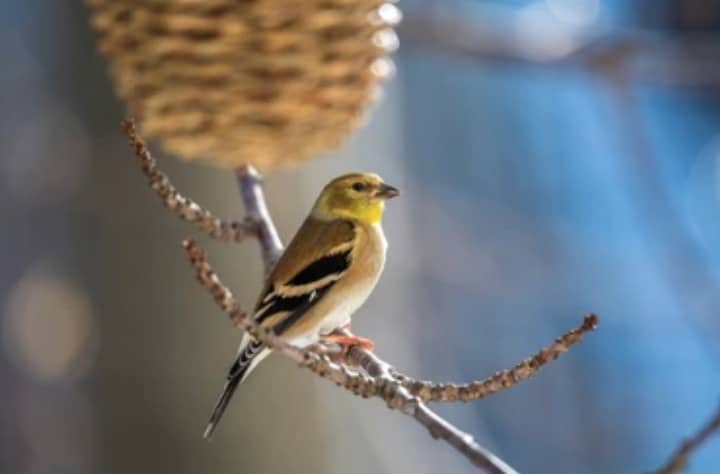
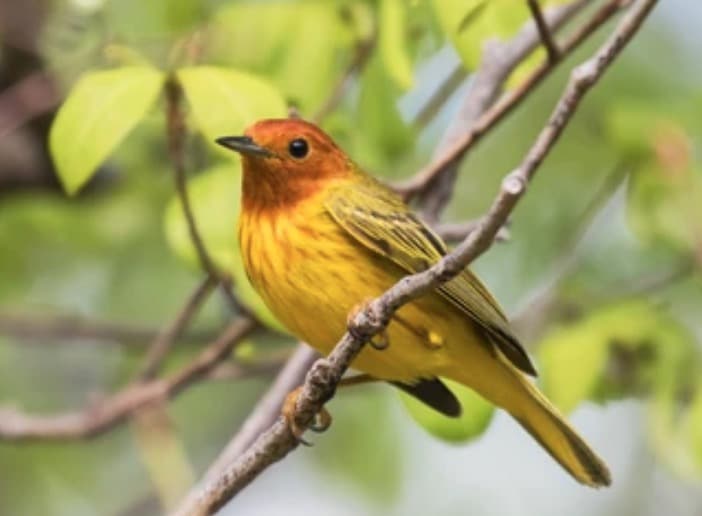
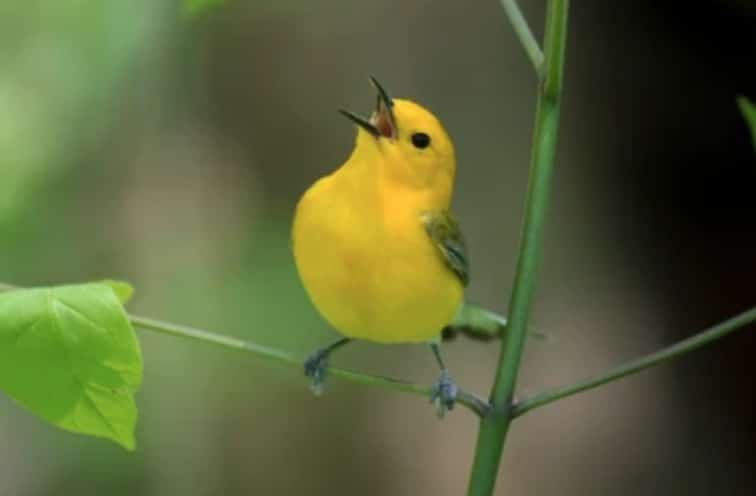
Prothonotary Warbler (Protonotaria citrea)
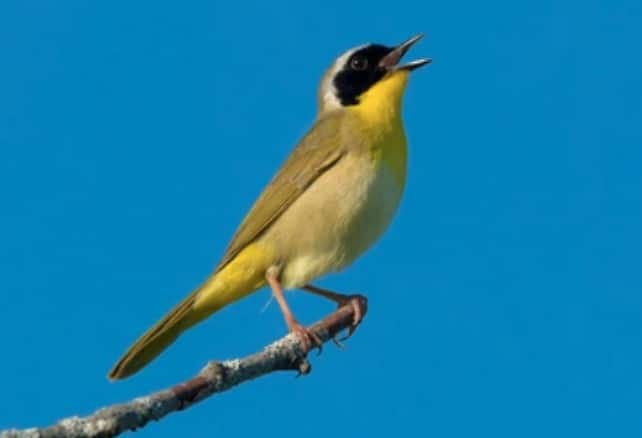
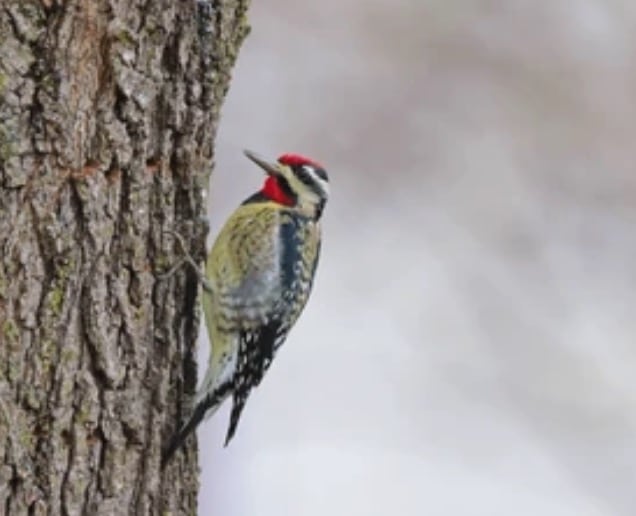
Yellow-bellied Sapsucker (Sphyrapicus various)
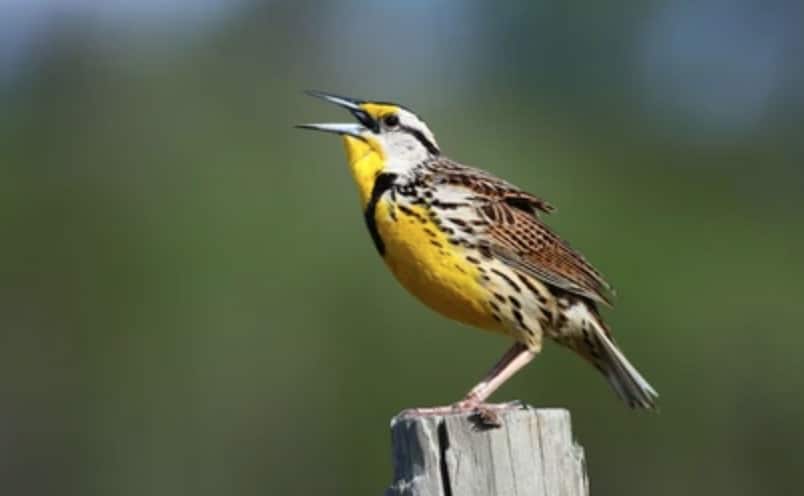
Eastern Meadowlark (Sturnella magna)
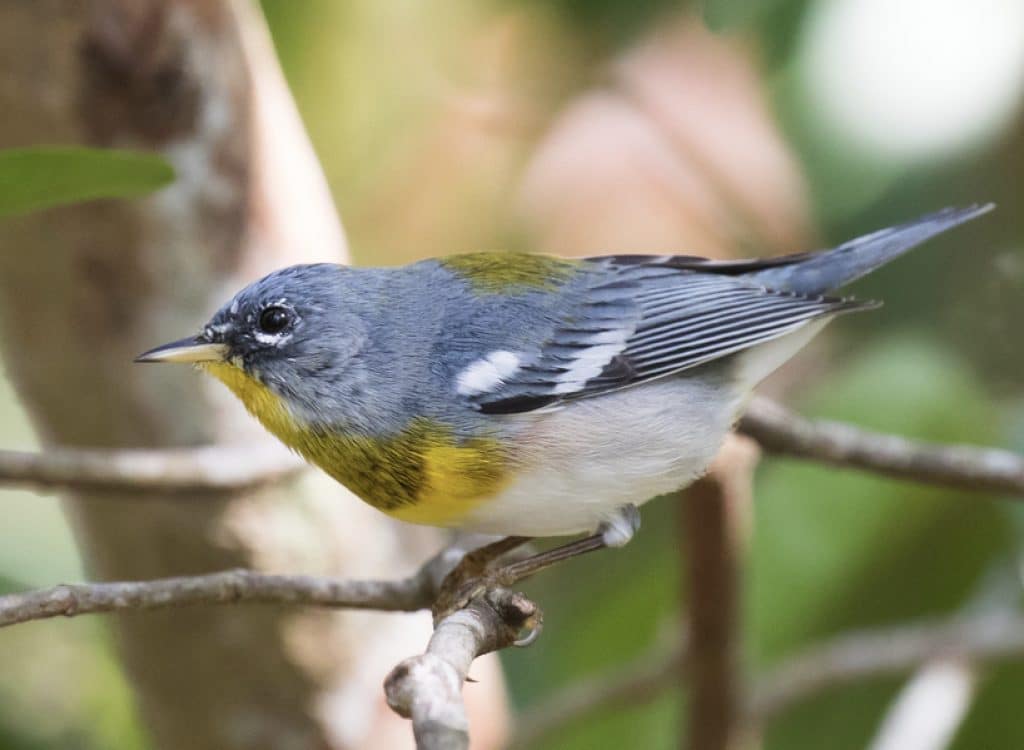
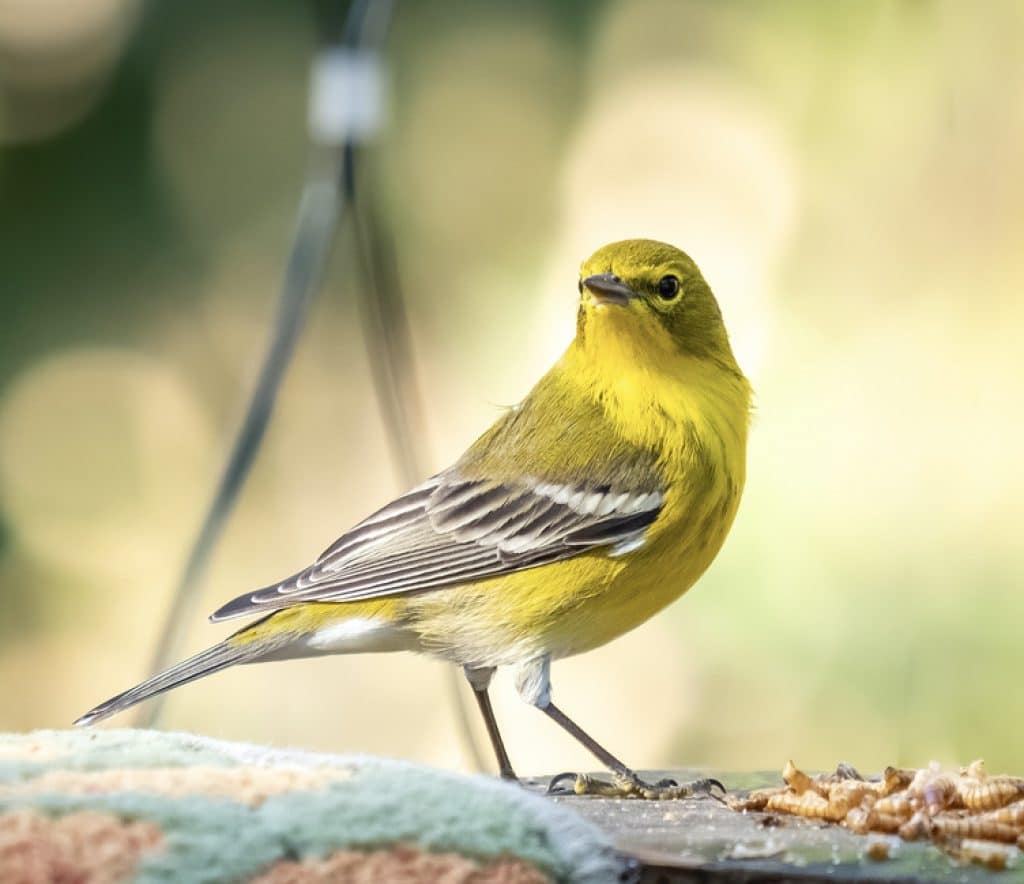
Pine Warbler (Setophaga pinus)
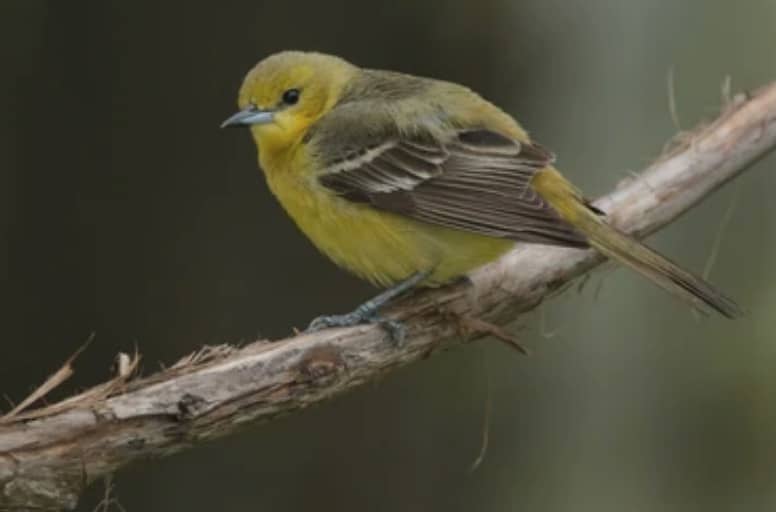
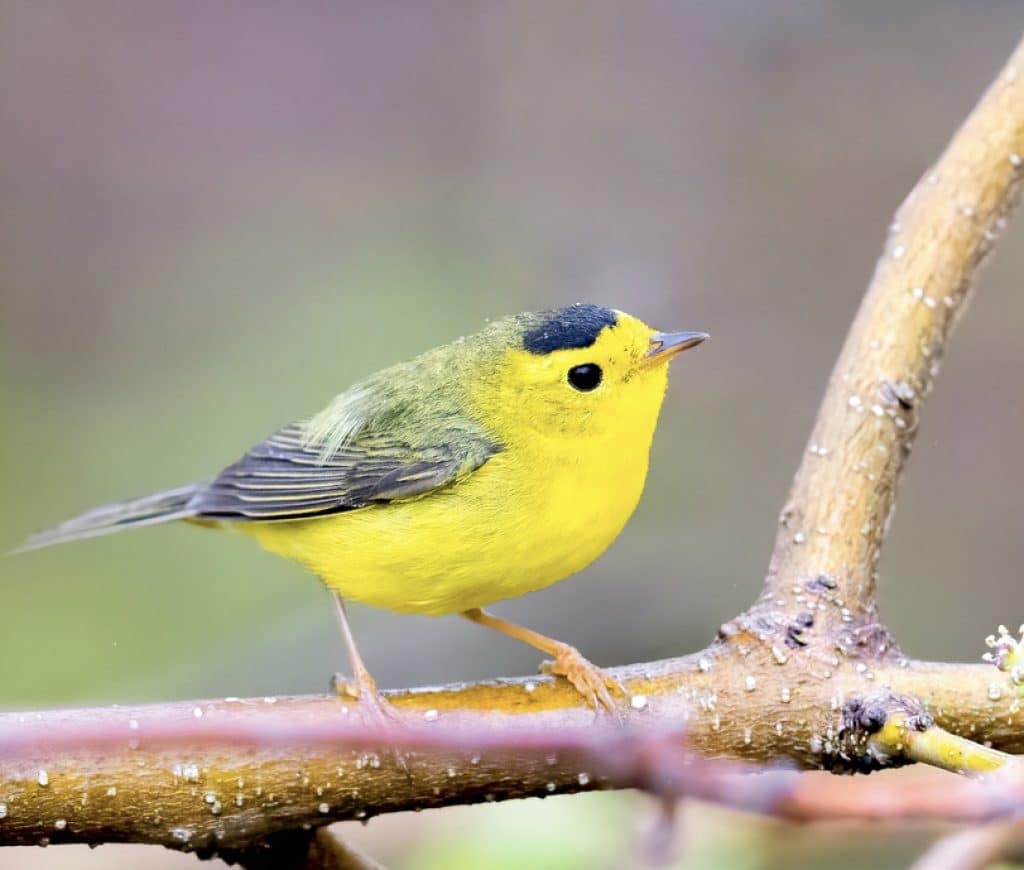
| Image | Bird Species | Scientific Name | Preferred Habitat | Notable Characteristics |
|---|---|---|---|---|
 | American Goldfinch | (Spinus tristis) | Open fields, gardens, woodlands | Bright yellow in males during breeding season, small and vibrant |
 | Yellow Warbler | (Setophaga petechia) | Shrubby areas, wetlands | Entirely yellow body, sweet song, often found near water |
 | Prothonotary Warbler | (Protonotaria citrea) | Swamps, wooded streams | Bright yellow body, prefers wet woodlands, distinctive song |
 | Common Yellowthroat | (Geothlypis trichas) | Marshes, wetland edges | Yellow throat and breast, males have a distinct black mask |
 | Yellow-bellied Sapsucker | (Sphyrapicus varius) | Woodlands, forests | Black and white with a yellow wash on the belly |
 | Eastern Meadowlark | (Sturnella magna) | Fields, prairies, open country | Yellow underparts with a black “V” on the chest, melodious song |
 | Northern Parula | (Setophaga americana) | Forests, especially near water | Blue-gray back with a yellow patch on the throat, vibrant song |
 | Pine Warbler | (Setophaga pinus) | Pine forests | Olive-green to yellow body, found in pine trees, trills |
 | Orchard Oriole | (Icterus spurius) | Open woodlands, orchards, parks | Black and chestnut with yellow underparts in younger males |
 | Wilson’s Warbler | (Cardellina pusilla) | Shrubby areas, thickets | Bright yellow with a distinctive black cap on males |
Ohio, with its varied landscapes from the Appalachian foothills to the Lake Erie shores, offers a magnificent array of birdwatching opportunities. This is particularly true for enthusiasts of vibrantly colored birds. Among the standout beauties are the yellow birds that grace the state’s skies and landscapes.
These birds, ranging from the American Goldfinch, a year-round resident known for its bright plumage, to the migratory Wilson’s Warblers with distinct greenish and yellow coloring, captivate observers with their hues and songs.
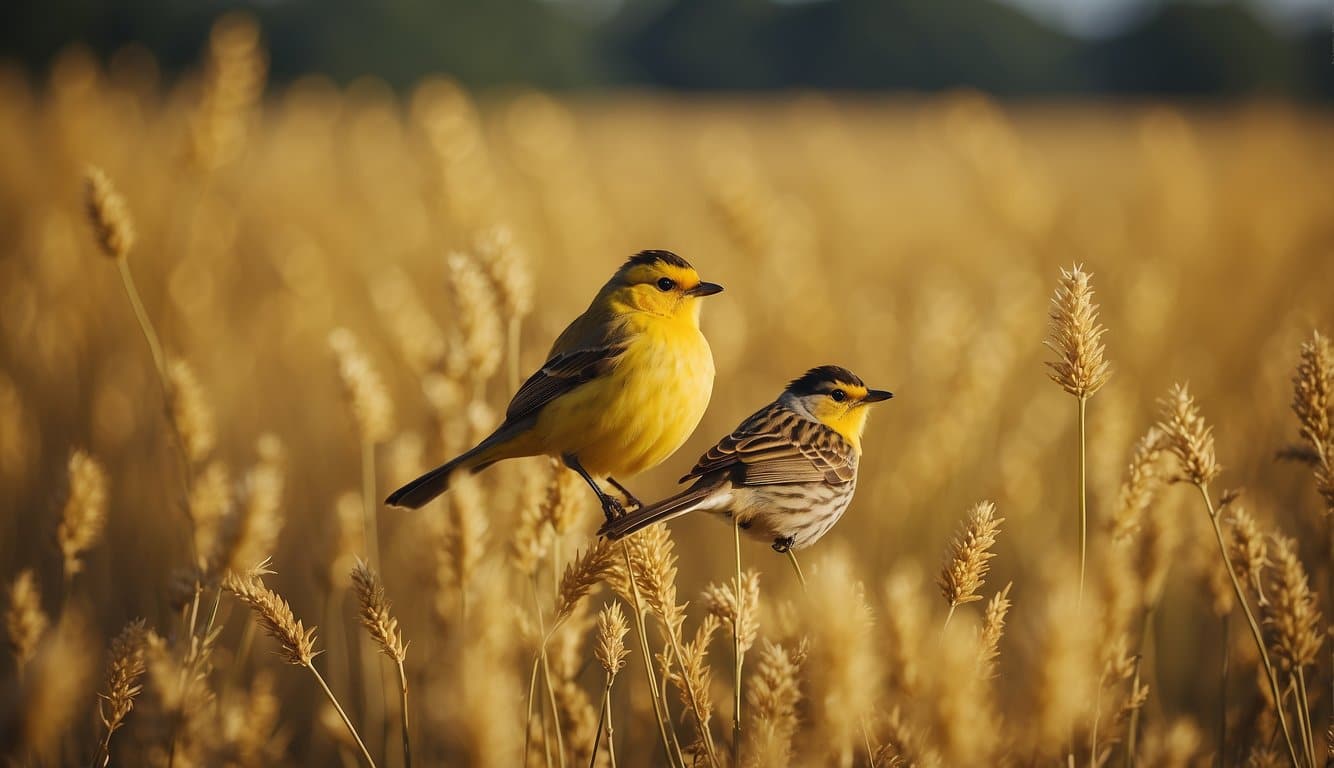
Their presence is not just a visual treat but also an essential aspect of Ohio’s ecosystems. The habitats that sustain these yellow birds are as diverse as their species, encompassing everything from suburban backyards to expansive state parks.
Understanding their migration patterns can serve as a guide to when these birds are most visible in the state, helping birdwatchers and conservationists to map their activities.
Key Takeaways
- Ohio’s diverse landscapes host a variety of yellow bird species.
- Habitats supporting these birds range from urban areas to natural parks.
- Migration patterns affect the visibility and presence of yellow birds in Ohio.
Yellow Birds Species in Ohio
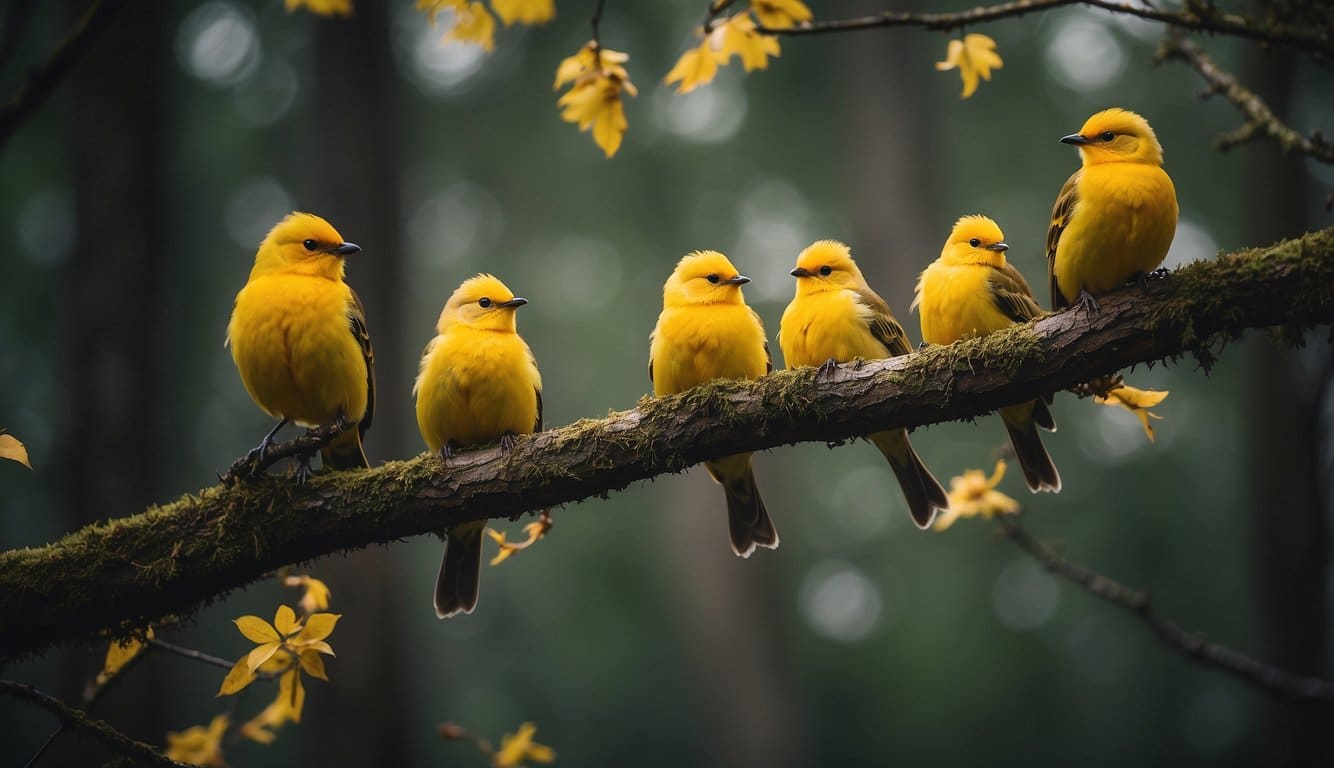
Ohio is home to a diverse array of avian species, including several that are predominantly yellow. The American Goldfinch, with its bright yellow and black plumage, is a year-round resident of Ohio. These small birds are easily identified by their vibrant colors and can be seen flitting about in flocks.
The Pine Warbler also makes an appearance in Ohio during spring and fall migration. They sport yellow and olive feathers with distinctive gray wingbars.
In contrast, the Wilson’s Warbler is recognized by its yellow-green body with a small black cap atop males’ heads, mostly spotted during their active and vocal spring migration.
Common Yellow Birds in Ohio:
- American Goldfinch
- Size: 11-13 cm
- Weight: 11-20 g
- Wingspan: 19-22 cm
- Pine Warbler
- Common in April
- Presence in 5% of checklists
- Wilson’s Warbler
- Size: 10-12 cm
- Weight: 6-8 g
During their seasonal travels, birdwatchers in Ohio are treated to sightings of the Yellow Warbler, Yellow-breasted Chat, and Prothonotary Warbler.
It’s worth noting that some species, such as the Orange-crowned Warbler, exhibit more muted yellow-olive coloration. Males of the Hooded Warbler brandish a striking black hood, setting off their yellow faces, a characteristic palette found in Ohio’s woodlands.
Habitats and Distributions
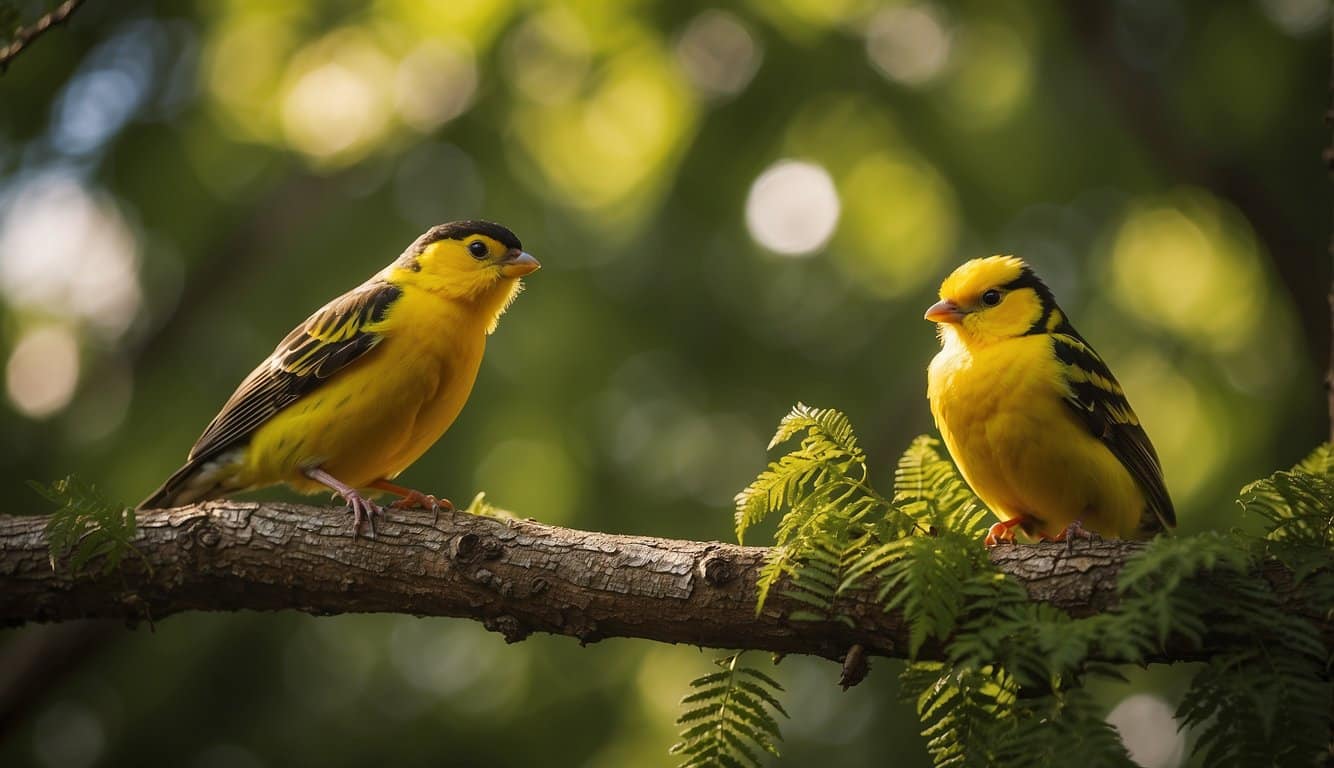
The diverse landscapes of Ohio offer an exciting canvas for a variety of yellow avian species. From spacious woodlands to the intricate ecosystems of wetlands, and the adapted environments of urban spaces, these regions cater to the distinct needs of yellow birds throughout the state.
Woodland Habitats
Ohio’s deciduous forests and scrubby woodlands are favored by species like the Nashville Warbler, where they actively hunt for insects.
These habitats are characterized by a thick undergrowth and a canopy of leaves that provides the necessary shelter and food resources.
Similarly, American Goldfinches persist year-round, often found in areas where thistles and sunflowers abound, using their adaptations to extract seeds.
Wetlands and Waterways
The state’s wetlands, riparian areas, and the banks of waterways provide the perfect ecology for yellow birds such as the Yellow Warbler.
These environments support a rich insect population, which is a key food source for these warblers. They build cup-shaped nests in low-lying bushy areas, taking advantage of the proximity to water.
Urban and Suburban Areas
Urban and suburban settings are not devoid of yellow bird species. American Goldfinches adapt well to backyards and parks, especially if bird feeders are present.
Their ability to coexist with human activity makes them a common sight in these areas. Such places must offer a blend of open spaces and vegetation that can support their diet and nesting preferences.
Migration Patterns
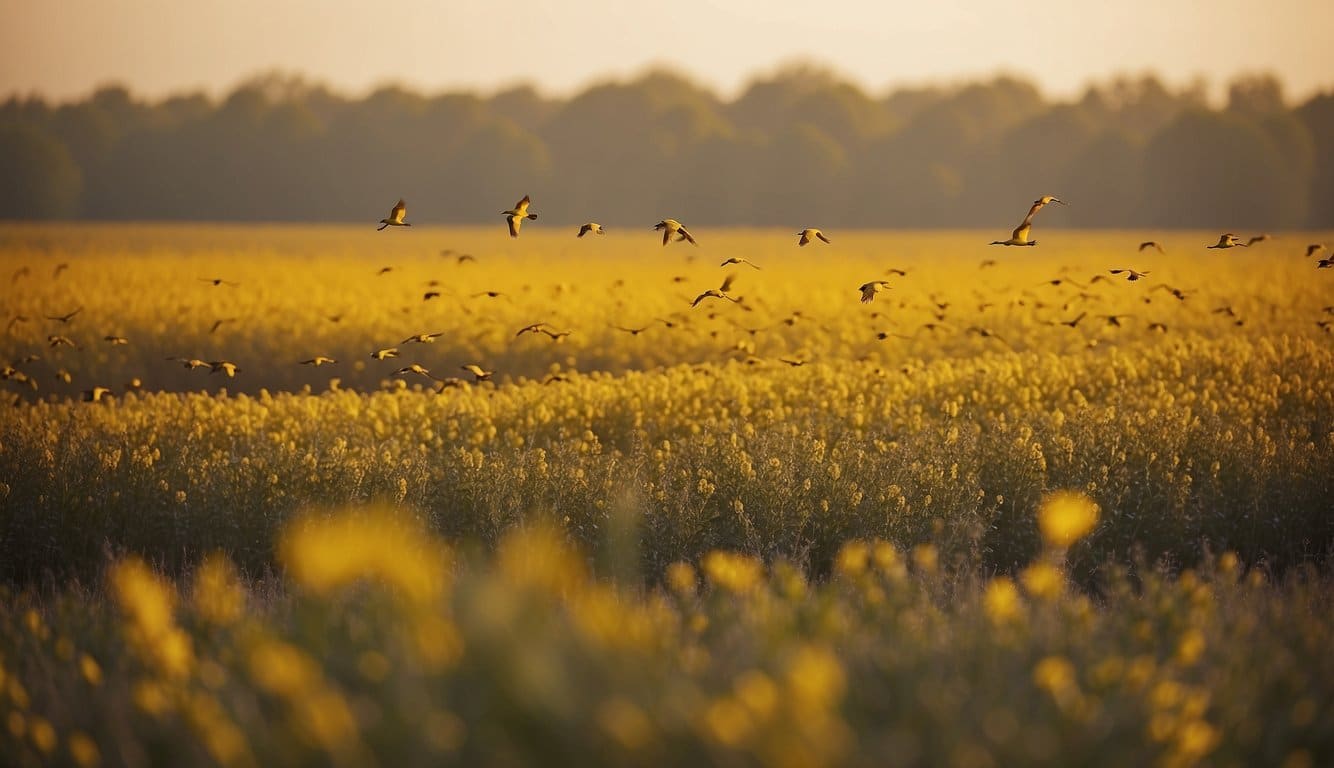
Ohio serves as a significant stopover for various yellow birds during their migration seasons. The spring and fall migrations are particularly noteworthy as they bring a wave of species across the state.
Wilson’s Warblers make their appearance recognized often during spring as they travel to their breeding grounds.
Generally small, these birds sport a mix of greenish and yellow hues, with males donning a distinctive black cap.
Pine Warblers are more pronounced in Ohio during April, coinciding with 5% of recorded bird observations.
They are identifiable by their plump yellow bodies, olive backs, and the contrasting gray wingbars, with females appearing slightly browner.
Here is a simple breakdown of migration timings for these birds:
- Wilson’s Warblers
- Spring Migration Peak: Early to mid-May
- Fall Migration: Late August to October
- Pine Warblers
- Spring Observation Peak: April
- Fall Migration: Late September to October
Birdwatchers in Ohio might spot American Goldfinches during winter, although they are year-round residents and may not be migrating. Their presence in winter is notable due to their vibrant yellow coloring.
Understanding these migration patterns helps enthusiasts time their birdwatching activities for optimal sightings. The use of field guides and suitable binoculars can enhance the experience when observing these transient yellow beauties.
Conservation Status
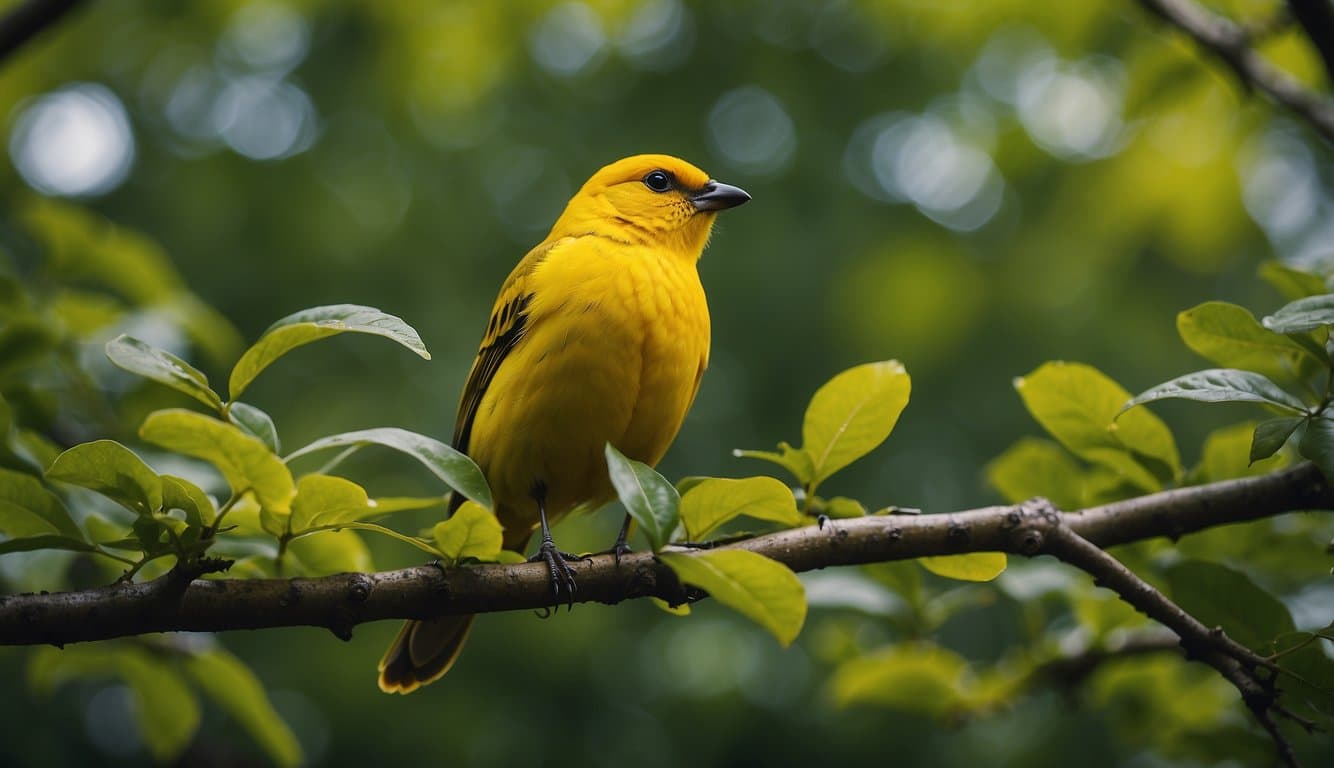
The conservation status of yellow birds in Ohio is of significant importance, ensuring these species thrive for years to come. Specific species face challenges, while collaborative efforts are in place to protect them.
Endangered Species
Several yellow birds in Ohio are listed as either endangered or of special concern.
Among these, the Cerulean Warbler (Setophaga cerulea) is a species that has seen population declines due to habitat loss and is listed as a species of concern.
The Yellow-bellied Sapsucker (Sphyrapicus varius), known for its distinct yellow wash and drumming on trees, is also monitored closely as its habitat is threatened by environmental changes.
Conservation Efforts
Conservation efforts in Ohio are multifaceted, focusing on habitat preservation, monitoring, and public awareness.
Initiatives like the Ohio Bird Conservation Initiative gather data and support conservation planning. Programs by the Ohio Department of Natural Resources aim to safeguard critical habitats.
- Habitat Restoration: Key to maintaining populations of yellow birds such as the Prothonotary Warbler (Protonotaria citrea).
- Monitoring Programs: Regular surveys and citizen science projects track species presence and numbers.
Recovery plans are also in place to address the challenges faced by species at risk, emphasizing responsible land use and the importance of natural areas.
Frequently Asked Questions
In the vibrant state of Ohio, birdwatchers and casual observers alike can enjoy the sight of various yellow birds. This FAQ section provides insights into the common species, identification methods, rare sightings, and habitat preferences specific to Ohio’s yellow avian residents.
What species of yellow birds are commonly found in Ohio?
Ohio hosts a variety of yellow birds including the American Goldfinch, Pine Warbler, Wilson’s Warbler, Yellow Warbler, Common Yellowthroat, Baltimore Oriole, Cedar Waxwing, and Yellow-rumped Warbler. These species are often sighted during migration seasons and local breeding periods.
How can one identify different types of yellow garden birds in Ohio?
Identifying yellow garden birds requires noting size, color patterns, and behaviors.
For instance, the American Goldfinch is small with a bright yellow body in the male during breeding season, whereas the Yellow Warbler is noted for its overall yellow color and fine, reddish streaks on the chest.
Which yellow birds in Ohio are considered rare?
Rare yellow birds in Ohio may include species like the Kirtland’s Warbler which has very specific habitat requirements, making sightings uncommon. Another infrequently seen species is the Yellow-throated Warbler, which is more often found in the southeastern United States.
What characteristics distinguish the American Goldfinch from other yellow birds in Ohio?
The American Goldfinch is recognizable by its vibrant yellow plumage in males during the breeding season, black wings with white bars, and a black cap. This small bird with a conical bill often frequents bird feeders and is known for its bouncy flight pattern.
Are there specific habitats in Ohio where yellow warblers are most likely to be found?
Yellow Warblers are typically found in wet, shrubby areas near streams and wetlands. They build nests in willow or alder trees and are attracted to areas with dense foliage that provides ample cover and insect populations for food.
How does one differentiate between male and female yellow finches in Ohio?
Male and female yellow finches, especially the American Goldfinch, can be differentiated by their distinct breeding colors.
Males exhibit a brighter yellow hue with a striking black cap, while females are duller with more muted olive tones and lack the black cap.
Outside of the breeding season, both sexes have more subdued plumage.